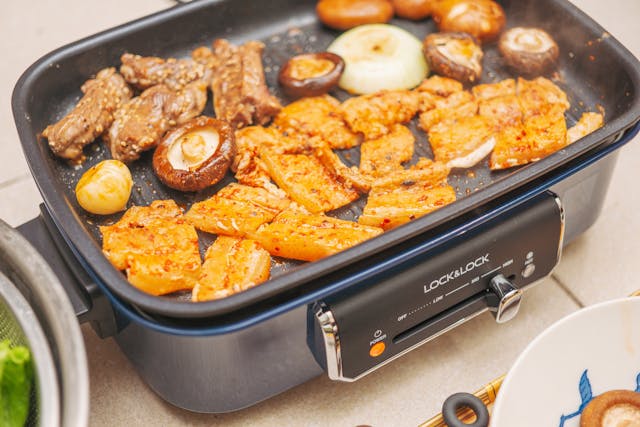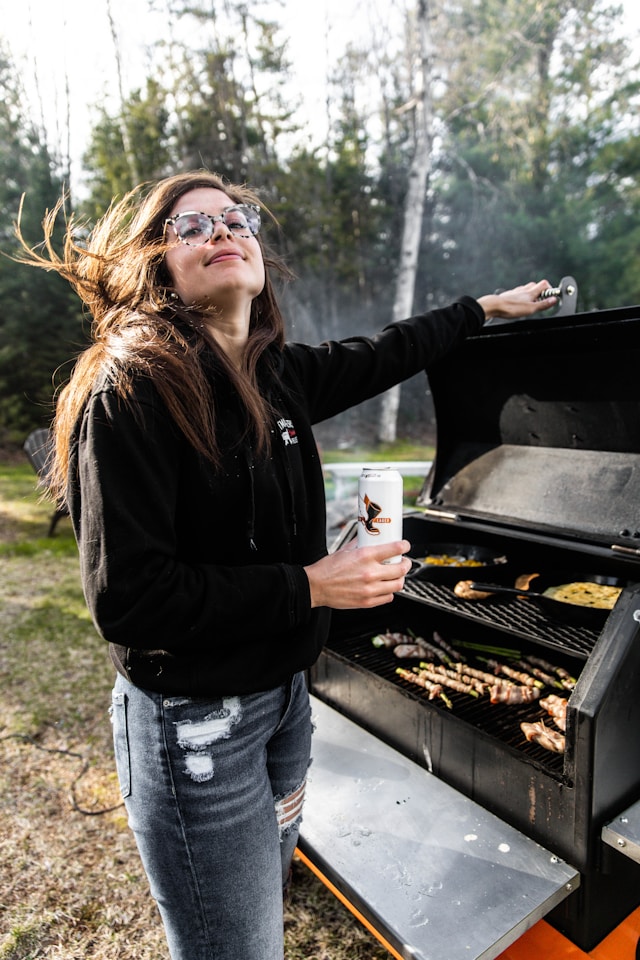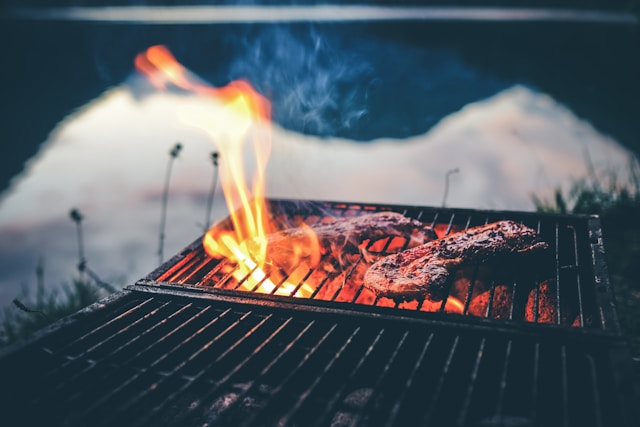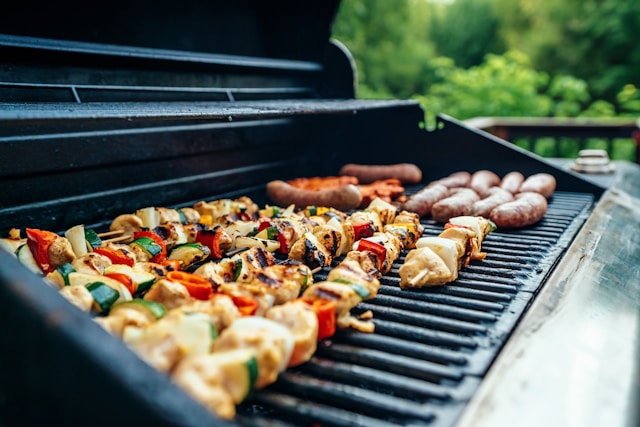Offset smoker vs gas smoker
Barbecue aficionados are typically passionate about their decision between an offset smoker and a gas smoker when it comes to outdoor cooking. Every kind has particular benefits and drawbacks that influence the tastes and experience of smoking meat. Pitmasters love the hands-on approach and rich, smoky taste that offset smokers deliver thanks to their classic wood-burning construction. Conversely, gas smokers are perfect for people who want a simpler cooking process because they provide accurate temperature control and convenience. We’ll go over the main distinctions in this comparison to assist you in selecting the smoker that most closely matches your preferred flavor and grilling technique.

What is an Offset Smoker?
The firebox and the cooking chamber are the two primary chambers of an offset smoker, a kind of barbeque grill. Meats may be cooked slowly and evenly thanks to the firebox, which is where the fuel typically wood or charcoal is burned. The smoke and heat from the firebox then enter the cooking chamber. This shape is perfect for low-and-slow cooking methods since it helps maintain a steady temperature and intensifies the smoky flavor.
Benefits of Using an Offset Smoker
Real Smoky Flavor:
Meats have a unique flavor that is difficult to duplicate with other smoking techniques because wood is used as the fire source. Apple, mesquite, and hickory wood, among others, can give your barbecue distinct flavors.
Temperature Control:
Better control of heat is possible with offset smokers. To get tender, tasty results, you must maintain the appropriate temperature, which may be done by adjusting the airflow and fuel.
Cooking Capacity:
A lot of offset smokers come with a lot of cooking areas, so you can cook a lot of meat at once or several dishes at once, which is great for get-togethers and parties.
Traditional Craftsmanship:
Using an offset smoker is a ritual for many lovers. It takes patience and skill, but for those who appreciate the process, it can be very rewarding.
Beginning to Use Your Offset Smoker
Selecting Your Fuel:
Charcoal can be used as a base for a longer burn even if wood is the preferred fuel. Try a variety of wood species until you discover the flavor profile that you like most.
Seasoning Your Smoker:
It’s crucial to season your offset smoker before using it for the first time. To create a non-stick surface, this method entails heating it up and allowing it to burn out any remaining oils and chemicals.
Controlling Temperature:
To keep an eye on the inside temperature of your cooking chamber, use a high-quality thermometer. For the majority of low-and-slow cooking, aim for a constant temperature between 225°F and 250°F.
Managing Smoke:
Try to avoid heavy, white smoke in favor of thin, blue smoke. Your meat will taste better and be less bitter when the wood burns cleanly, which is indicated by thin blue smoke.
Methods for Smoking
The 3-2-1 Approach:
This well-liked method works wonderfully with ribs. To get a good bark, the ribs must be smoked for three hours, then wrapped in foil and cooked for a further two hours, and then unwrapped for one hour.
Brining and Marinating: Think about brining or marinating your meats before smoking for more flavor and moisture. By doing so, you can improve the flavor and avoid dryness.
Bark Growth:
Steer clear of overwrapping your meat too soon so that it may develop a decent bark, or the tasty crust that occurs during cooking. Rather, concentrate on making a flavorful, dry rub.
The Complete Guide to Gas Smokers: Flavor at Your Fingertips Without Any Work
Because they are convenient and produce consistent results, gas smokers are becoming more and more popular among barbecue fans. Gas smokers are an excellent option for novice and experienced grillers alike because of their user-friendly design and capacity to provide mouthwatering, smoky flavors. We’ll explore the features, advantages, methods, and advice in this guide to help you get the most out of your gas smoker.
Describe a gas smoker.
A cooking gadget that employs natural gas or propane as a heat source is called a gas smoker. Typically, this smoker has a regulated heating element that precisely regulates the temperature, which makes it perfect for smoking and slow-cooking meats. Gas smokers, in contrast to conventional charcoal or wood smokers, streamline the smoking process without sacrificing flavor.
Benefits of Using a Gas Smoker:
The ease of use of gas smokers is one of their main advantages. They are easy to operate and need little setup, which makes them ideal for beginners. They include a push-button ignition and temperature settings that are adjustable.
Maintaining a consistent cooking environment is made possible by the precise temperature adjustment offered by gas smokers. This is especially important for low-and-slow cooking, as temperature changes might affect the finished dish.
Less Cleanup:
Gas smokers produce less ash and residue than charcoal or wood smokers, which makes cleanup considerably simpler after a picnic.
Versatility:
A lot of gas smokers have extra features like several racks, moisture-retaining water pans, and wood-chip smoking boxes. This adaptability enables you to try out various methods and flavors.
Starting Your Gas Business Smoker Fuel Choice:
Select natural gas or propane based on what’s available to you. Natural gas gives a consistent supply but requires a direct line installation, whereas propane tanks are easily replaceable and portable.
Seasoning Your Smoker:
Before using your gas smoker for the first time, season it like you would any other smoker. To ensure a clean cooking surface, this entails heating it to burn off any manufacturing residues.
Temperature Control:
Get acquainted with your gas smoker’s temperature controls. Aim for the ideal smoking temperature range of 225°F to 250°F. Making use of an external thermometer can aid in obtaining precise readings.
Using Wood Chips:
Add wood chips to the smoker to get that cherished smoky flavor. Before using, soak them in water for about half an hour. Then, put them in a special smoking box or right next to the heat source.
Methods for Smoking Hot and Quick:
Gas smokers work great for hot and quick techniques. This is ideal for foods like sausages or chicken wings since it entails cooking meats at a higher temperature (about 300°F) for shorter periods of time.
Low and Slow Smoking:
This technique works well for classic barbecue dishes like brisket or ribs. To add flavor, use a combination of wood chips and keep the temperature at a constant 225°F.
Brining and Marinades:
Before smoking, marinate or brine your meats to improve flavor and moisture retention. This will keep your finished meal from becoming dry and improve its flavor.
Glazing and basting:
To add an additional layer of flavor and moisture to your meats during the latter stages of cooking, think about basting them with a glaze or marinade.
Upkeep and Concern
Regular maintenance is essential to maintaining the best possible condition for your gas smoker. To avoid flare-ups and preserve hygiene, remove any grease or residue after each usage. Make sure the burners are clear of obstructions and clean on a regular basis. Check the gas connections for leakage. A well-kept smoker will last a long time and work dependably.
CONCLUSION
The decision between gas and offset smokers ultimately comes down to your cooking tastes, style, and desired experience. Many aficionados love the classic, hands-on method that offset smokers provide, as it allows them to impart rich, smoky flavors to meats. They demand greater ability and focus, but they also yield incredibly fulfilling outcomes for those who put in the effort. However, gas smokers offer unparalleled ease of use and reliable temperature control, which makes them perfect for novices or individuals seeking a simpler smoking experience. Either way, you can enjoy the satisfying art of smoking meat, whether you prefer the simplicity of a gas flame or the skill of controlling a wood fire. Both varieties can yield wonderful barbecue.
Freequently Asked Questions
Which kind of smoker is best, gas or pellet?
Which is better for you, a gas grill or a pellet grill? Six...
In general, gas grills do best at medium to high temperatures, although pellet grills perform better at lower temperatures when cooking or smoking. Having said that, an increasing number of pellet grills can cook over a direct flame and reach temperatures high enough to sear!







